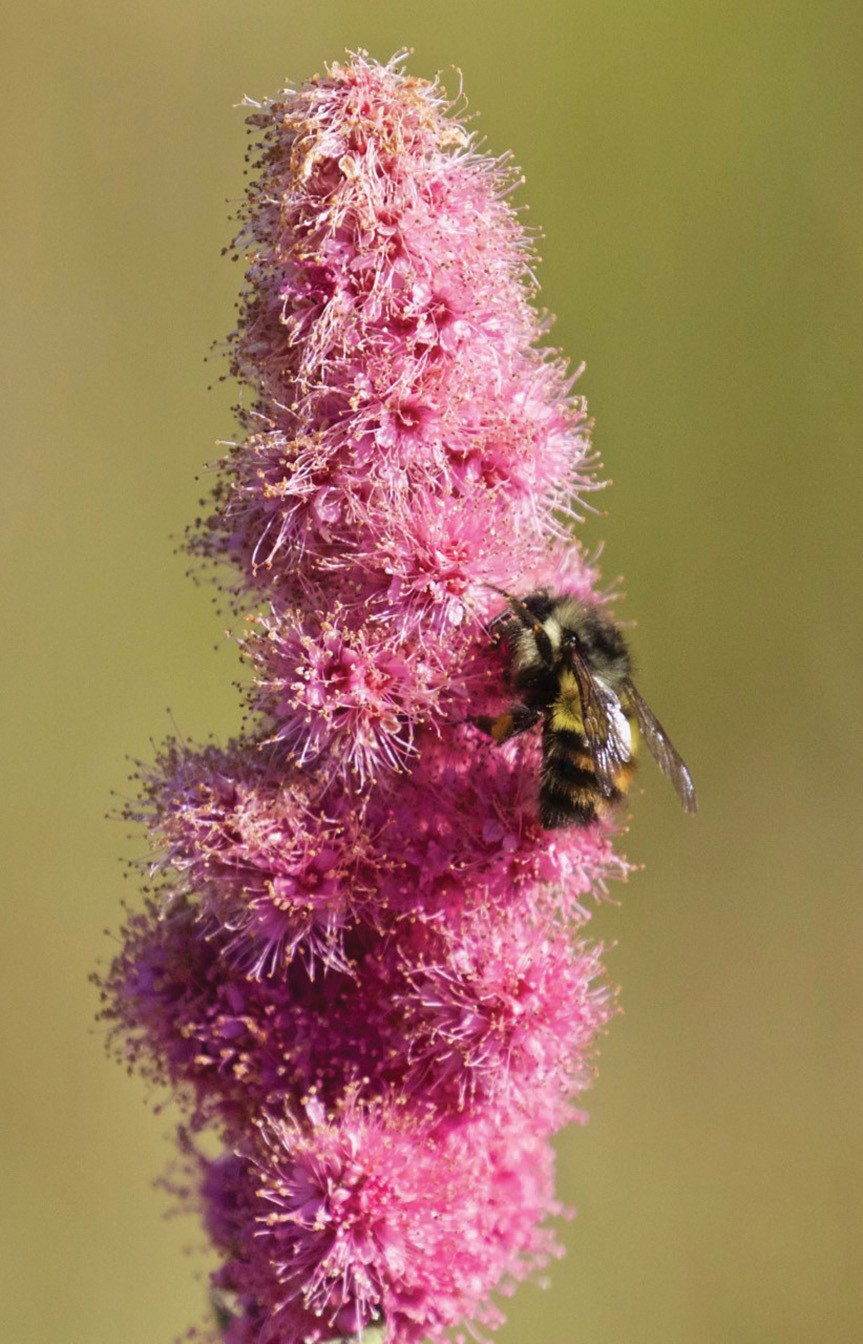It’s Pollinator Week June 20 to 26 so let’s get growing!
As a follow up to the “Butterflies in the Garden” article in the Coast Reporter for Earth Day, and in response to an increased interest in pollinator gardening, a native plant list was compiled to help gardeners select host and nectar plants that attract birds, bees, butterflies and beneficial insects to their backyard gardens.
Pollinators and flowers have a mutually beneficial, symbiotic relationship.
Rooted in place, trees, plants and crops need an agent to transfer pollen for them to thrive and reproduce. The great variety in colour, form and scent we see in flowers is a result of their intimate association with pollinators. Flowering plants and food crops, critical in the functioning of ecosystems, cannot survive without the help of pollinators.
While butterflies and other pollinators drink the nectar from a variety of different flowers, not all blooms are created equal. Ornamental, cultivar or hybrid plants do not provide the necessary quality or quantity of energy-rich nectar that pollinators need compared to native plant species. To increase your chance of pollinator abundance, native flower species are your best bet.
We know it’s important to provide bright fragrant flowers to attract butterflies, but there’s another important element that is often overlooked: the baby nursery. Supporting butterflies on their journey through complete metamorphosis requires more than just pretty flowers. Once mated, the female must find a place to lay her fertilized eggs. She seeks out the unique and necessary food plants that her species has co-evolved with over countless generations so that her young can start feeding immediately after they hatch; these are called larval host plants. To prevent your garden from looking like a half-eaten buffet table, place the host plants behind or amongst taller nectar plants.
To enhance and build resilience in the native pollinator populations, highways of habitat are more important than ever to grow in our communities. Pollinators will benefit from the fragrant bounty laid out before them and play a role supporting neighbourhood food gardens, biodiversity and long-term sustainability.
While it is best to choose native plants, when selecting any type of plant it is important to consider a few details:
- climate conditions (summer drought, winter rains)
- soil quality, garden size and drainage
- beware of invasive species (ie: butterfly bush, Himalayan blackberries)
- use FireSmart native trees and plants
- maintenance requirements
- aesthetic value
- seasonal plant availability
- budget
We have compiled a list of suggested native plant species to get you started.
Nectar plants:
- red flowering currant (Ribes sanguineum),
- Canada goldenrod (Solidago lepida),
- Douglas aster (Symphyotrichum subspicatum),
- woodland strawberry (Fragaria vesca),
- Kinnikinnick (Arctostaphylos uva-ursi),
- pearly everlasting (Anaphalis margaritacea),
- western yarrow (Achillea millefolium), woolly sunflower (Eriophyllum lanatum),
- low Oregon grape (Berberis nervosa),
- tall Oregon grape (Berberis aquifolium),
- common camas (Camassia quamash),
- sea blush (Plectritis congesta),
- red Columbine (Aquilegia formosa),
- gumweed (Grindelia stricta),
- broadleaf stonecrop (Sedum spathulifolium),
- mock orange (Philadelphus lewisii).
Host Plants:
- Pacific bleeding heart (Dicentra formosa),
- ocean spray (Holodiscus discolor),
- chokecherry (Prunus virginiana),
- Pacific ninebark (Physocarpus capitatus),
- cottonwood (Populus trichocarpa),
- stinging nettle native (Urtica dioica ssp gracilis),
- Saskatoon serviceberry (Amelanchier alnifolia),
- hardhack (Spiraea douglasii),
- showy milkweed (Asclepias speciosa).
If you would like to learn more about butterflies of the Sunshine Coast, native host and nectar plants, please join our guest speaker, Rand Rudland, for a night of photo delight and suggestions on what type of plants are favoured by our local Sunshine Coast butterflies. Monday, Sept. 26, 7 p.m. at Seaside Centre. For more information visit secheltgardenclub.com and click on monthly meetings.
For more information about B.C. native plants visit: www.idomo.org/sechelt-water-raingarden-natives-1.htm.
If you want to attract a specific local butterfly species check out: sargbay.ca/index.php/flora-fauna/pollinators/.



